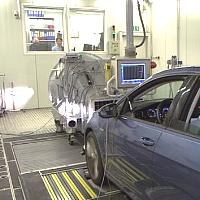(LUXEMBOURG) – EU laws on vehicle emissions have been improved since the Dieselgate scandal, but challenges remain, according to a new Briefing Paper from the European Court of Auditors, published Wednesday.
The auditors welcome improvements in market surveillance but point out that its effectiveness depends on implementation by the Member States. They also warn that manufacturers may find ways around the new testing systems which have been introduced and that scope for independent third-party testing may be limited because of the high costs involved.
In 2015, discrepancies between vehicle emission levels in the laboratory and on the road were brought into sharp focus by the so-called Dieselgate scandal, which revealed that some car makers were using “defeat devices” to produce significantly lower emissions during official tests than during normal driving.
Dieselgate stimulated the EU to accelerate legislative initiatives already underway and to take new action. The European Parliament set up an enquiry into emissions measurement and the European Commission announced plans to improve the available data on vehicle emissions testing, which is limited, fragmented, and difficult to access. In addition, there were a large number of changes to EU vehicle emissions checks:
- the Commission can now review the work of national type-approval authorities, test vehicles themselves, withdraw or suspend type-approvals, and impose penalties;
- testing of vehicles in circulation is now mandatory in EU Member States and may also be conducted by interested third-parties;
- ·new tests have been introduced to tackle the large gap between CO2 (carbon dioxide) emission levels in the laboratory and on the road, and to measure NOx (nitrogen oxide) emissions.
As many of the new rules are not yet fully in force, it was too early to assess whether the problems have been solved. Nevertheless, the auditors highlight a number of challenges facing the new system of testing.
“We welcome the fact that the actions have been taken, but it may take many years to improve inner-city air quality, given the large number of highly-polluting cars already on the roads,” said Samo Jereb, the ECA Member responsible for the Briefing Paper. “Even though more than ten million vehicles have been recalled so far, the limited data available indicates that the impact on NOx emissions has been small.”
The new NOx test has led to a significant reduction of NOx emissions by new diesel cars, say the auditors, but the impact could have been even greater if the initially proposed temporary limit of 128 mg/km had been adopted, instead of 168 mg/km.
The auditors’ view is that improvements will take some time to become apparent and they identify a number of issues:
- the effectiveness of market surveillance will depend on the implementation by Member States;
- although the legislation provides for better monitoring of the gap between laboratory figures and CO2/NOx emissions on the road, manufacturers may find new ways to adapt their vehicle emissions during the tests;
- the newly-introduced independent third-party testing may be limited due to the high costs involved.
Briefing Paper: The EU’s response to the “dieselgate” scandal


